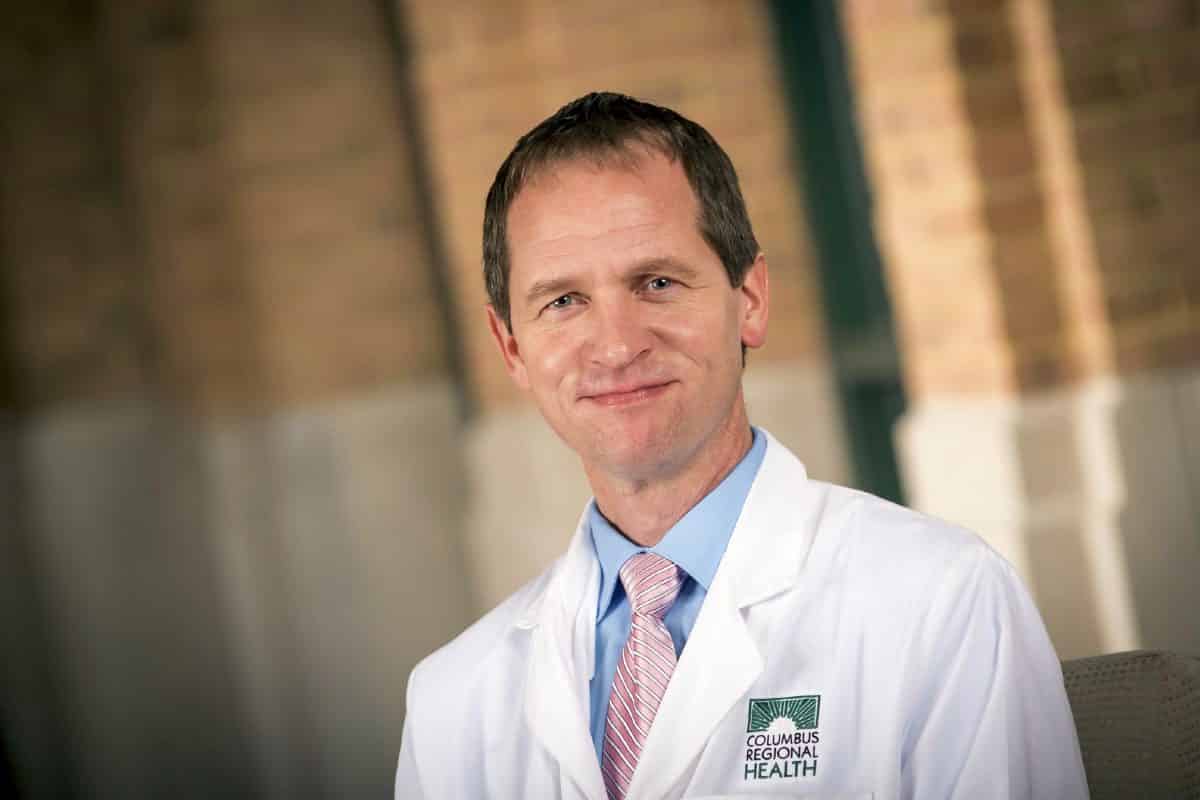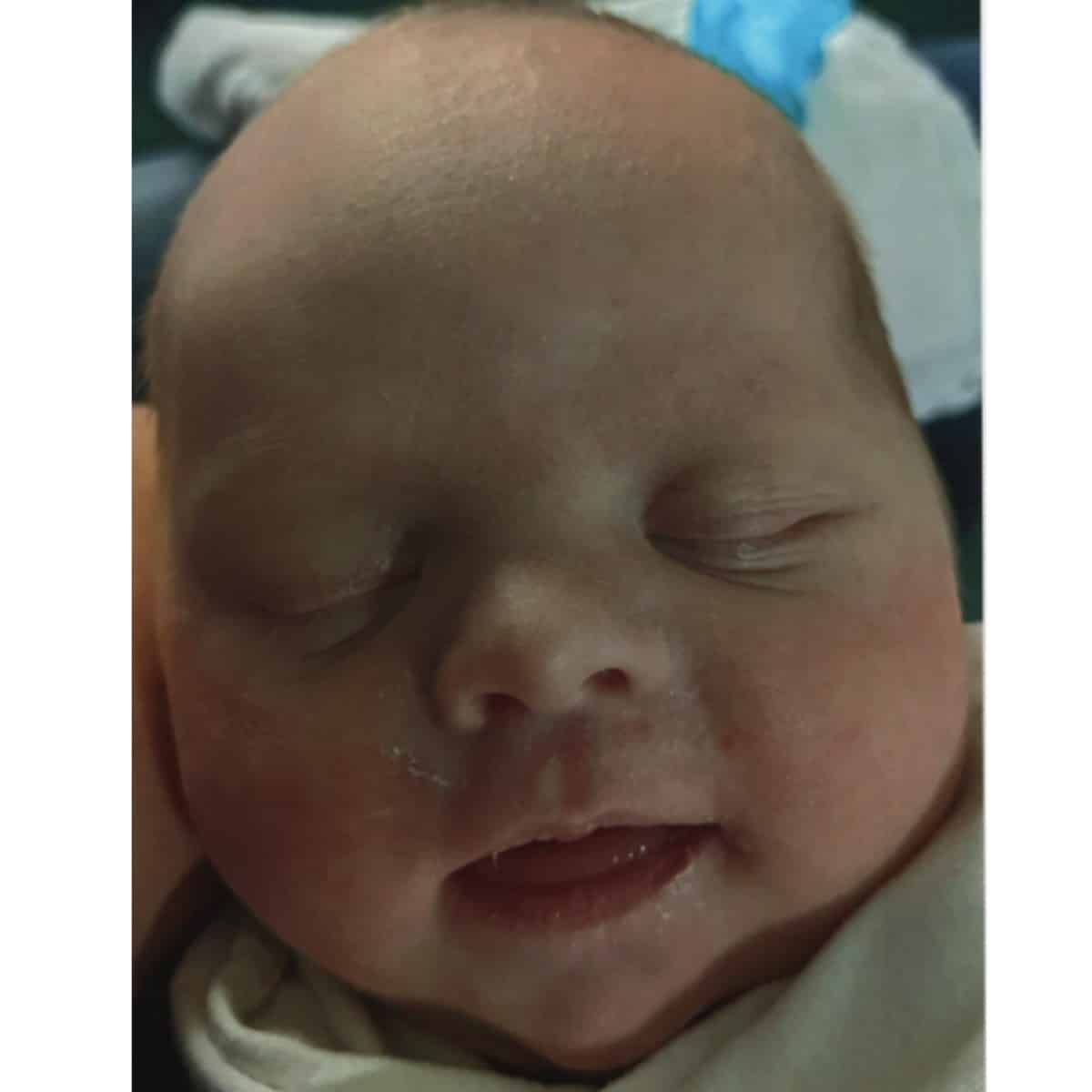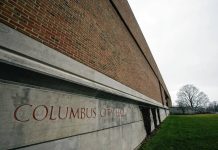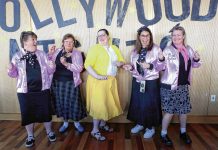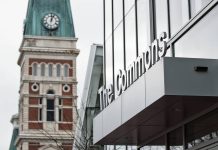At 11 years old, one local girl could not read, write or even speak.
Sophia Reynolds, Columbus, was attending the Indiana School for the Deaf, but her teachers had deemed her unteachable, unreachable and likely suffering from an intellectual disability. The best course of action, they said, was to remove Sophia from general education classes because she would never be able to succeed in that environment.
But Sophia Reynolds’ grandmother, Vickie Reynolds, also of Columbus, saw something in her deaf granddaughter that no one else did — potential.
Although she could not speak in sign language and had already raised four children of her own, Vickie Reynolds chose to step into the role of parent once again and became Sophia’s guardian, vowing to give her a life of success, regardless of what her teachers said.
Today, Sophia, who is now 16, is an honors student at Columbus East High School, a former member of the East swim team, a talented art student and a dancer at Dance by Design.
Although she already has accomplished more than most people said was possible for a girl with her hearing disabilities, Reynolds said her granddaughter’s road to her current success was filled with innumerable twists, turns and roadblocks that would have made most deaf people give up on their dreams.
“At that point in her life, she couldn’t read, she couldn’t write, she couldn’t talk,” Reynolds said. “But she had a brain that was working and eyes that had been seeing everything.”
Early diagnosis
Sophia’s troubles began when she was two days old and a routine test showed that was unable to hear and process sounds.Doctors declared that Sophia was deaf, but Vickie Reynolds said she noticed early on that her granddaughter had some hearing capabilities. In fact, Reynolds said Sophia could hear and recognize several sounds, such as a clock chime or a dog’s bark.
Further tests showed that Sophia was born with auditory neuropathy, a condition in which sounds can be heard but become jumbled when they are processed in the brain.
Even though she had some hearing capabilities, Sophia still struggled to learn basic communication skills, Reynolds said. She began her education in the state’s specialized school for deaf students but said she did not receive the specialized attention she needed to overcome her disabilities, particularly her speech disabilities.
“I would say, ‘Would you please help me?’ and they would say, ‘I’m coming, I’ll help you,’ but they didn’t,” Sophia said after her grandmother used both words and sign language to ask about her experience at the school for the deaf.
As the years went by, Sophia’s situation did not improve, and at almost 11 years old, Reynolds described her granddaughter as a mild Helen Keller who was unable to express her thoughts or feelings. As a result, Sophia became angry, hostile and frustrated, Reynolds said.
Move to public school
Fed up with Sophia’s situation, Reynolds took guardianship over her granddaughter when she was 11 years old and enrolled her in fifth grade at Southside Elementary School, hoping the public school system could offer help for Sophia that the specialized school for the deaf could not.The journey into public school was nerve-wracking, Sophia said, but people at Southside went out of their way to make her feel welcome.
For example, all students did the “Pledge of Allegiance” together in sign language each morning. Additionally, another girl in Sophia’s fifth-grade class asked to be her friend, a gesture that put the timid and scared fifth-grader more at ease in her new school.
But few other things were easy during Sophia’s first days at Southside.
When she came home from her second day of fifth grade, Reynolds said her granddaughter was overwhelmed by the homework she was asked to complete.
Although she was enrolled in a fifth-grade class, Sophia had never mastered the skills she was taught in her first- through fourth-grade classes at the school for the deaf. Without that foundation, Reynolds said Sophia had no way of keeping up academically with her peers.
“Here she is, bringing home homework … and I can’t interpret, I can’t help her, and I’m crying, and I’m like, ‘Oh wow, this is day number two,’” Reynolds said.
Eventually, Reynolds was able to hire an after-school tutor to work with Sophia four days a week, and the state provided an interpreter to attend school with Sophia and help her through the day.
As the tutor and interpreter got to know the fifth-grader, Reynolds said they reinforced what she had known about her granddaughter all along.
“(The interpreter) said, ‘She is smart. She can figure out just about anything,’” Reynolds said.
The grandmother-granddaughter duo also found their own ways at home to help Sophia catch up academically with her peers.
While she had been opposed to television and electronics when her children were growing up, preferring they went outside and experienced the world around them, Reynolds said she allows Sophia to watch television with the captions on, which helps her learn new words. Her favorite show to watch is “House M.D.,” running in syndication, Sophia said.
Reynolds also allows her granddaughter to read the news on her cellphone and text her friends, two activities that improve her vocabulary and her communication skills.
But just as important as Sophia’s academic performance were her social skills, which Reynolds said were extremely lacking. Most children who are deaf have maturity levels that are well below those of their peers because they cannot hear the auditory clues that would help them develop their social skills, she said.
Discovering dance
To remedy Sophia’s fear of social interaction, Reynolds enrolled her granddaughter in a multitude of after-school activities such as swimming, tennis and dance classes, a process that was initially overwhelming, Sophia said. But as she slowly began to catch up with her peers and became more comfortable in a public-school setting, Sophia was able to discern which activities truly sparked her interest.While she loves participating in her school’s art program and spent some time on the Olympians swim team, Sophia said her passion lies in her dance classes.
Although she has made a few friends during her time at East, Reynolds said her granddaughter feels most at home with her fellow dancers, who accept her for who she is.
Even though she cannot hear the music correctly, Sophia intently watches her teachers and other dancers to learn her routines. Her favorite style of dance is Irish, she said.
“She hears the music, and then she’s so fast that she’s watching the other children. She takes their cue, but you would never notice it,” Reynolds said.
Despite the strides she has made in the past five years, Reynolds said people still tend to underestimate Sophia’s abilities. For example, in a recent consultation with a vocational expert for people with hearing disabilities, Reynolds was told her granddaughter should focus her career aspirations on jobs that require minimal training.
But Reynolds is determined to help Sophia achieve her dreams, regardless of how much work those dreams might take.
Later this summer, the Reynolds will travel to Rochester, New York, to visit the Rochester Technical Institute for the Deaf, one of only a few technical colleges for students with hearing disabilities in the country.
And when she begins her junior year at East this fall, Sophia will continue her technical education when she takes an introductory robotics class.
Although Sophia does not know yet what career path she wants to follow, Reynolds said she is amazed that her granddaughter is considering any sort of professional career.
When she looks back on where Sophia was five years ago, the grandmother said she is in awe of how her granddaughter has blown away everyone’s expectations for her life.
Reynolds said she wants to send a message to parents, grandparents and any other adults caring for children with disabilities: “Step up to the plate and … fight for their child.”
[sc:pullout-title pullout-title=”About Sophia” ][sc:pullout-text-begin]
Sophia Reynolds, 16, will begin her junior year at Columbus East High School this fall. She started in BCSC schools when she was a fifth-grader at Southside Elementary, then moved to Central Middle School before enrolling at East. Her favorite subject in school is math, and she is interested in the district’s robotics and arts programs. Outside of school, Sophia is a dancer at Dance by Design in Columbus.
[sc:pullout-text-end][sc:pullout-title pullout-title=”BCSC special education services” ][sc:pullout-text-begin]
Students who may need to be enrolled in Bartholomew Consolidated School Corp.’s special education services first undergo a testing process to determine the students’ intellectual, social and developmental abilities. All testing is done in consultation with the students, parents, teachers and school psychologist, as well as any other necessary specialized parties, such as a speech therapist.
Once a student is enrolled, their special education services are determined on a case-by-case basis and an individualized program is developed. Some students receive help in a general education classroom, some are pulled out for one-on-one attention and others receive a combination of those services. In Sophia Reynolds’ case, the state is required to provide an interpreter to help her hear in her classes. The services can follow a child throughout his or her entire educational career in BCSC for as long as needed.
For more information about BCSC special education services, call 812-376-4460.
[sc:pullout-text-end]


